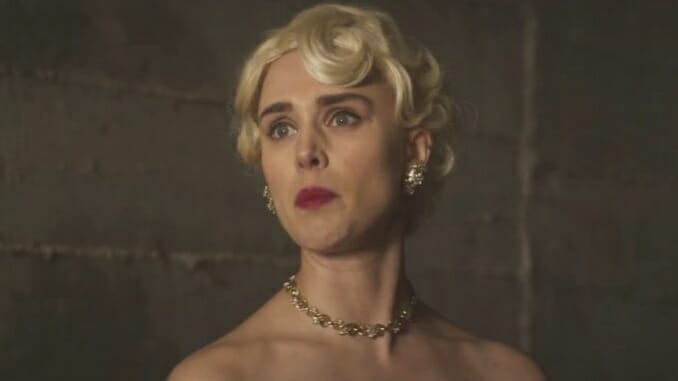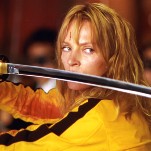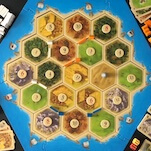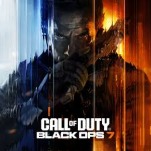The Bunker Game Is an Exercise in Squandered Atmosphere and Potential

Roberto Zazzara’s The Bunker Game is a frustrating addition to the “role-playing gone wrong” subgenre of horror. Joe Lynch’s Knights of Badassdom has more character, while Preston DeFrancis’ Ruin Me—also a Shudder exclusive—showcases better gamesmanship. Though Zazzara’s production designers construct impressive “tunnels” dug under Mussolini’s fascist regime, there’s little substance behind the architectural intricacies or saturating red glow of alarms. At the same time, the screenplay leaves potential commentary about those live-action role players (LARPers) who reenact historical atrocities for entertainment on the table. This is just one reason The Bunker Game hardly scratches—let alone makes a dent in—the surface of this particular horror niche.
In the game’s premise, participants enter a bunker where they hear a post-WWII fantasy where Germany wins, and America starts a third nuclear war that spreads toxic waste across the globe. Experience mastermind Gregorio (Lorenzo Richelmy) has created an underground world where LARPers pretend they’re chosen to repopulate what’s left above, except there’s a traitor in the encampment. Damsel Laura (Gaia Weiss), Nazi Chancellor Andrej (Tudor Istodor), and other company plants keep the theatrics alive as players commit to their fantasies. That’s until a lighting fixture falls during a ballroom sequence and inadvertently injures Laura’s cousin, Harry (Mark Ryder), an incident that causes the roleplaying adventure to abort for safety issues. All but Gregorio and his team leave for hotel rooms, but Laura notices Gregorio is gone—and they’re all locked inside the bunker.
Marco Graziaplena’s cinematography does a good deal of heavy lifting as the camera creeps around rocky corners, silhouetting characters against the pitch-blackness ahead. The Bunker Game shines almost exclusively under dim subterranean lights and blaring redness when tension rises, which Graziaplena paints with artful brushstrokes. Scenes feel claustrophobic despite blown-open dimensions, as echoey chambers start to constrict when Graziaplena focuses more tightly on isolated inhabitants. Zazzara spotlights a musty backdrop of ’50s costumes and World War II command center stations, which all successfully does the time warp. Ironically, this makes the events occuring against this backdrop all the more noticeably lackluster in comparison.
-

-

-

-

- Curated Home Page Articles By Test Admin October 21, 2025 | 3:10pm
-

- Curated Home Page Articles By Test Admin October 21, 2025 | 2:57pm
- Urls By Test Admin October 21, 2025 | 2:57pm
- Curated Home Page Articles By Test Admin October 21, 2025 | 2:55pm
-

-

-

-

-

-

-

-

-

-

-

-

-

-

-

-

-

-

-

-

-

-

-

-

-

-

-

-

-

-

-




































